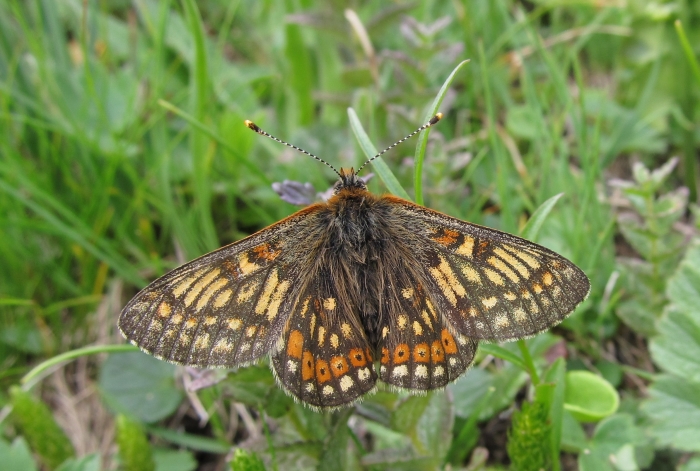Thanks guys, he really was a beauty and certainly made the trip worthwhile
That’s very interesting
Guy. I guess it shows the close relatedness of the subspecies/species if they share a gene which can produce an identical aberration, I’m going with a genetic aberration as opposed to an environmental one here.
~~~~~~~~~~~~~~~~~~~~~~~~~~~~~~~~~~~~~~
May 2024
Sunday 26th. No eye-catching ab’s today, in fact there wasn’t a great deal of butterflies at all. Partly down to the weather, which was iffy to start with, cloudy with the risk of showers and with a ‘stiff breeze’ blowing, weather people talk for very windy! I had intended to get down to Kithurst in peak Duke season but lack of A/L from work and too much weather combined to ruin those plans!
The Duke party was well and truly over by now though, however there were patches of blue sky and just enough warmth for a bit of life to show itself. A few Grizzled Skipper and Common Blue were about and a single Large White sat around waiting , like me, for the sun.
When the sun did come out properly so did my only two Sussex Dukes I saw this year. One, an OAP faded shadow of his former glory, struck a pose on some Yellow Rattle whilst a fresher one took a nap during a passing cloudy spell.
The walk down along a sheltered path to the next destination added a few more species to the days tally
The main reason for coming to this part of Sussex was to have a look at a grassy bank I found a (very) small colony of Silver-spotted Skipper on last year. I say colony... I found two. But I had planned to drop by this spring to see what other surprises it held (secretly hoping for an equally small colony of Dukes). If they are there, I didn’t find any, but then I was probably too late if they are anyway, however there was enough healthy looking Cowslip to maintain a small Colony so there is still hope. The presence of both spring Skippers also gives hope (the Dingy Skippers were extremely uncooperative).

- The inquisitive spider had second thought when it saw the size of its visitor.
Next year I’ll definitely visit during peak Duke!
The quickest route back to the station takes me through Perry Hill, only about half an hour or so from the grassy slope where the ‘stiff breeze’ was blowing an absolute gale! The only thing I found on the slope was a Painted Lady feeding frenetically on the Thyme but I had no hope of getting close, however down at the bottom which is reasonably sheltered there was a bit more activity. Small Heath bobbed around and a number of Common Blue, with an argumentative Brown Argus mixing things up, kept my attention for a while, the prize being a fine looking female CB.
A little bit further along a female Orange-tip was taking a bit of time out.
Late afternoon and on the home straight to the station in Burpham Meadows, the place was still quite swampy but just about passable if you know the various routes. Here I added Red Admiral, another good looking female Common Blue and a second Painted Lady, this one sat but did look like it had been migrating for some time!
